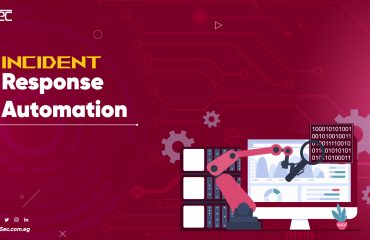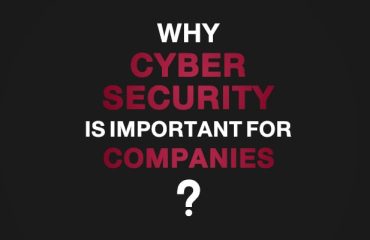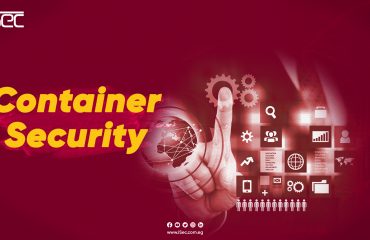
The energy and utilities sector forms the backbone of modern society, providing essential services like electricity, water, gas, and other critical resources that power homes, businesses, and industries. As this sector becomes increasingly digitized, it also becomes more vulnerable to cyberattacks. Cybersecurity is, therefore, a paramount concern in ensuring the safety, reliability, and continuity of energy and utility services. The potential impact of a cyberattack on this infrastructure could be catastrophic, affecting national security, public safety, and the economy.
Why Cybersecurity is Critical for Energy and Utilities
Energy companies, power grids, and water utilities are heavily reliant on interconnected systems and digital technologies, including industrial control systems (ICS), supervisory control and data acquisition (SCADA) systems, and smart grids. These systems are responsible for monitoring and controlling critical infrastructure processes in real-time, making them attractive targets for cybercriminals, hacktivists, and nation-state actors.
Cyberattacks on the energy and utilities sector have the potential to cause widespread disruption, including power outages, water contamination, and even physical damage to infrastructure. The consequences can range from temporary service interruptions to long-term economic and public health crises. Given the growing reliance on digital technologies, the attack surface for cyber threats continues to expand, making cybersecurity a vital component of the energy sector’s operational resilience.
Key Cybersecurity Threats in Energy and Utilities
- Ransomware Attacks
Ransomware has emerged as one of the most prominent threats to the energy and utilities sector. In a ransomware attack, malicious software encrypts critical data, locking operators out of their systems until a ransom is paid. These attacks can cripple operations, leaving energy companies unable to deliver essential services to consumers. Notable incidents like the Colonial Pipeline ransomware attack in 2021 highlighted the devastating impact such attacks can have on fuel supplies and critical infrastructure. - Supply Chain Attacks
Energy companies often rely on third-party vendors and partners for software, hardware, and maintenance. Cybercriminals exploit vulnerabilities in these supply chains to gain access to critical systems. The SolarWinds attack, which affected several government agencies and energy companies, demonstrated how attackers can infiltrate organizations through compromised supply chain products. - Insider Threats
Employees, contractors, and service providers with access to sensitive systems pose a significant risk, either through negligence or malicious intent. Disgruntled employees or individuals with access to privileged systems can disrupt operations or leak confidential information. Insider threats are particularly dangerous in the energy sector due to the access insiders have to sensitive operational technology (OT) systems. - SCADA/ICS Vulnerabilities
Industrial control systems (ICS) and SCADA systems, which manage the operations of energy and utility networks, are often outdated and were not originally designed with cybersecurity in mind. As these systems are connected to the internet, they become vulnerable to cyberattacks. Infiltration of SCADA systems can allow attackers to manipulate physical processes, potentially leading to shutdowns, equipment damage, or safety hazards. - Nation-State Attacks
Nation-state actors are a growing threat to the energy sector, often targeting critical infrastructure for espionage, sabotage, or political gain. These attackers possess sophisticated tools and resources, and their objectives often go beyond financial gain. Nation-states may seek to disrupt energy supplies, cause long-term damage to a country’s economy, or gain strategic advantages during conflicts. The Stuxnet attack, which targeted Iran’s nuclear facilities, is a well-known example of how nation-state actors can impact critical infrastructure. - Phishing and Social Engineering
Social engineering attacks, particularly phishing, are common entry points for cybercriminals targeting the energy sector. Employees may be tricked into clicking on malicious links or downloading infected files, providing attackers with a foothold into the organization’s systems. Phishing remains a low-cost, high-reward attack method that can be used to steal credentials or deliver malware.
Best Practices for Strengthening Cybersecurity in Energy and Utilities
Given the critical nature of the energy and utilities sector, cybersecurity must be approached with a comprehensive, proactive strategy that addresses both technological and human factors. Below are some key best practices to safeguard critical infrastructure:
- Network Segmentation
Energy companies should implement network segmentation to separate IT (information technology) networks from OT (operational technology) networks. This prevents cyberattacks from spreading between systems. By isolating critical control systems from the public internet or less secure segments, companies can reduce the risk of attackers gaining access to sensitive operations. - Multi-Factor Authentication (MFA)
Multi-factor authentication should be deployed across all critical systems to enhance access control. MFA requires users to provide two or more verification factors before accessing a system, making it more difficult for attackers to breach networks, even if they obtain login credentials through phishing or brute-force attacks. - Regular Patching and Updating
Outdated systems and software are prime targets for cyberattacks. Energy companies should adopt a rigorous patch management policy, ensuring that all systems—especially SCADA and ICS—are updated regularly to address known vulnerabilities. Automated patching can help prevent critical security flaws from being exploited. - Incident Response Planning
Developing and testing a robust incident response plan is essential for mitigating the impact of a cyberattack. Energy companies should prepare for various scenarios, including ransomware, DDoS (distributed denial of service), and insider attacks. A well-practiced response plan can help organizations react quickly to minimize disruption and restore operations efficiently. - Employee Training and Awareness
Human error is often a weak link in cybersecurity defenses. Regular cybersecurity awareness training for employees is critical to ensuring that they can recognize phishing attempts, avoid social engineering traps, and follow best practices for data protection. Employees with access to critical systems should receive additional training on the specific risks and responsibilities related to their roles. - Monitoring and Threat Detection
Continuous monitoring of network traffic and system logs is essential for detecting suspicious activity early. Energy companies should invest in advanced threat detection systems, such as Security Information and Event Management (SIEM) solutions, to track potential security incidents in real-time. Machine learning algorithms can also be used to identify anomalies and detect emerging threats. - Zero Trust Architecture
Adopting a Zero Trust security model, where no user or system is inherently trusted inside or outside the network, can provide additional protection for critical infrastructure. In Zero Trust architectures, all access requests are continuously verified, and strict access control policies are enforced.
The Role of Government and Regulation
Governments around the world recognize the importance of securing the energy sector from cyber threats. In the U.S., the Cybersecurity and Infrastructure Security Agency (CISA) and the Department of Energy (DOE) play a central role in setting cybersecurity guidelines for the energy industry. The North American Electric Reliability Corporation Critical Infrastructure Protection (NERC CIP) standards provide a regulatory framework to protect the bulk electric system from cyber threats.
In Europe, the Network and Information Security (NIS) Directive imposes cybersecurity obligations on operators of essential services, including energy and utility companies, to enhance the overall security posture of critical infrastructure.
The Future of Cybersecurity in Energy and Utilities
As the energy sector continues to innovate with smart grids, IoT (Internet of Things) devices, and renewable energy sources, the attack surface will continue to grow. Future cybersecurity efforts will need to address emerging technologies such as 5G, edge computing, and artificial intelligence (AI). AI and machine learning could play a pivotal role in detecting and mitigating cyber threats, while blockchain technology may be leveraged for securing transactions and verifying data integrity in energy trading.
As the global push toward sustainable energy progresses, cybersecurity must remain a top priority for energy providers. By investing in robust security measures and fostering collaboration between public and private sectors, the energy industry can mitigate cyber risks and ensure the safe, reliable delivery of services.
Conclusion
Cybersecurity in the energy and utilities sector is a critical issue that demands the attention of governments, businesses, and individuals alike. The consequences of a cyberattack on this sector can have far-reaching effects, not only disrupting daily life but also threatening national security. By adopting a multi-layered cybersecurity strategy, energy companies can protect their systems from cyber threats, ensure the resilience of their operations, and safeguard the communities they serve. In an era of increasing digitalization and connectivity, robust cybersecurity is the key to sustaining the future of the energy industry.



